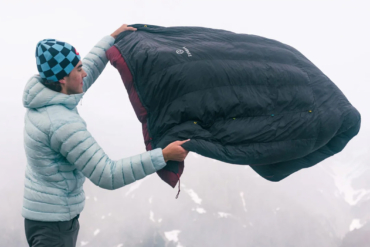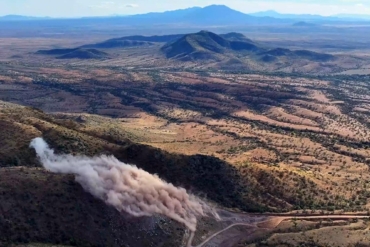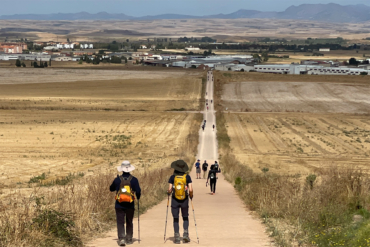Have a great idea? Wonderful. Now take these steps to turn your invention into reality. This is how to take your product from a dream to the shelves.
The outdoor industry is booming. It contributed $412 billion (2.2 percent) of total U.S. Gross Domestic Product in 2016, according to a report by the Bureau of Economic Analysis. People value outdoor experiences and are willing to pay for them.
The market for high-quality, useful outdoor gear is strong. Why not get in on the action? You’ve had that idea for a new piece of equipment that would make your adventures even better — why not pursue it?
I’ve written a book to help you. While geared toward women, it’s for anyone out there who wants to create and bring a product to market. In writing this book, I interviewed more than a dozen inventors and found out what it takes to create a top-selling product.
And my co-author knows firsthand. She invented the Heroclip, a combination carabiner and swiveling hook that provides an extra set of hands in many settings.
 Among others, we also talked to Nancie Weston, who invented the Grayl water filter; Chez Grungraber, who created Gobi Gear, a sectional backpack system; and Serena Rolfe, who patented and marketed the Tempus Hood, a detachable rain hood.
Among others, we also talked to Nancie Weston, who invented the Grayl water filter; Chez Grungraber, who created Gobi Gear, a sectional backpack system; and Serena Rolfe, who patented and marketed the Tempus Hood, a detachable rain hood.
After speaking with these inventors and years of my own traversing the endless booths at Outdoor Retailer trade shows as an outdoor gear reviewer, these are the top tips I have for taking that product to consumers.
Hilary Meyerson is the co-author of “Be an InventHer: An Everywoman’s Guide to Creating the Next Big Thing.”
Just Build It: Prototyping
Lots of people can’t get past the back-of-the-napkin stage of inventing. But you’ve got to start with some rough physical model. It doesn’t have to be pretty. Early prototyping is all about learning some quick and dirty lessons about your product.
We’ve seen lots of products that started as mostly duct tape and some rigged components. That water bottle/trekking pole combination sure sounded good, but after you strap your Nalgene to a pole and try it for a few miles, you might rethink it.
As you get further in development, you’ll need more sophisticated prototypes. But you gotta start with what you can make with your own hands. Sew it, build it, mold it, carve it — do what you gotta do for a first pass.
Do Your Homework: Market Research
Call it market research, call it feedback, but whatever you do, put some hours in before committing a large chunk of your savings into getting this project off the ground.
Start small. We talk about the “first five” in our book: the first five people who can tell you what they think of your idea. Does it make sense? Would they buy it? How much would they pay?
If it’s a backpacking product, find those backpackers in your circle. A new bike light? Look up that gal at the office who commutes by bike. Take a hard look at what’s already on the market — check REI, Amazon, do a patent search.
Finally, if you can, get yourself into Outdoor Retailer. Roam the aisles and see what else is out there. If you can’t differentiate your product from similar ones, it might be time to go back to the drawing board.
Stockpile Extra Cash: Fundraising
 So you think you’ve got a great idea, and you know it’s going to require funds to get it off the ground. Do the best financial planning you can, then add another 50 percent for what we like to call the “shit happens” fund.
So you think you’ve got a great idea, and you know it’s going to require funds to get it off the ground. Do the best financial planning you can, then add another 50 percent for what we like to call the “shit happens” fund.
Ever done a major remodel on a house? Has it ever come in on or under budget?
Every inventor we talked to had an unexpected hiccup along the way: a legal battle, goods held up in customs with a major fee, a production round that had to be thrown out because it didn’t meet quality standards, the business partner who ran off with some funds, etc.
Fundraising is a huge part of starting a business, and there are lots of ways to do it, from bootstrapping to crowdfunding to venture capitalists. But whatever method you use, plan on raising more than you think you’ll need.
Plan for Production Carefully: Manufacturing
Manufacturing is one of the most critical parts of bringing your product to life. The first question is domestic versus international, and both have pros and cons.
It also depends wildly on the type of product you’re making. Making something out of steel? It might have been far cheaper to go overseas, but recently introduced tariffs might make that a different story now. Going domestic has some real advantages, including a marketing bump for made-in-the-USA products and ease of communication and shipping times.
Overseas production might be cheaper, but it takes much longer to ship and there’s lag time in time zones and communication. You’ll also need someone on the ground who speaks the native language and troubleshoot at the factory.
We’ve seen businesses flounder when a worker strike at the factory halts all production for months and translation issues result in 20,000 units of unsellable goods. (See the “shit happens” fund above.) Choose your manufacturer wisely.
Target Your Audience: Marketing
There is no upper limit to how much you can spend on getting the word out about your product. You can quickly drain every dollar if you take advantage of every marketing avenue available to you.
The key is targeting. Find your buyers, learn everything about them, and then send your marketing campaigns to where they are. No, you don’t have to be on every social media platform and sponsoring every single event and running pricey SEM (search engine marketing) campaigns.
It’s better to sponsor that one event that’s for your target buyer — hello FlyFishingPalooza or Mountain Bike Fest! — or partnering with one influential blogger who is writing about women in rock climbing or kayak camping or backcountry cooking.
And sure, you probably have to do ads on Facebook. (Its targeting is amazing, but yes, it knows too much about us and our buying habits). But maybe you don’t need to spending on Snapchat, Pinterest, and LinkedIn.
But if there’s a hashtag on Twitter called #hikingwithdogs that is super active, you might want a sponsored Tweet for your new doggie backpack. Just be careful. Lots of new product creators have drained the coffers with expensive marketing spends that try to reach everyone.
Be Authentic: Your Brand Identity
This might be the most important of all the tips. You are your brand, especially when you’re getting started. In the outdoor industry, consumers can spot an inauthentic brand a mile away. In this industry, you’re not just selling a product. You’re selling a lifestyle. Do people want to be part of that? Do they want to identify with your brand?
There’s a reason people love great outdoor brands like Patagonia, Hydro Flask, The North Face, Merrell, and REI. They know what they stand for, and they show it. Their marketing materials, charitable endeavors, and corporate culture are in line with who they are. It appeals to outdoor enthusiasts.
One huge mistake we see is when fledgling business owners hire big marketing or PR agencies that don’t necessarily get outdoor brands and launch expensive, flashy campaigns that feel more New York City glam than Rocky Mountain real. Don’t get caught up — have a clear mission statement about who you are as a brand and stick to it.
The outdoor industry is unique. The people are incredible and willing to help newcomers. The shared love of the outdoors goes a long way toward building a community. Just ask for help, and people will respond.
The most important step to take is the first one. Don’t let lack of experience deprive the outdoor industry of the next big thing. You got this.







